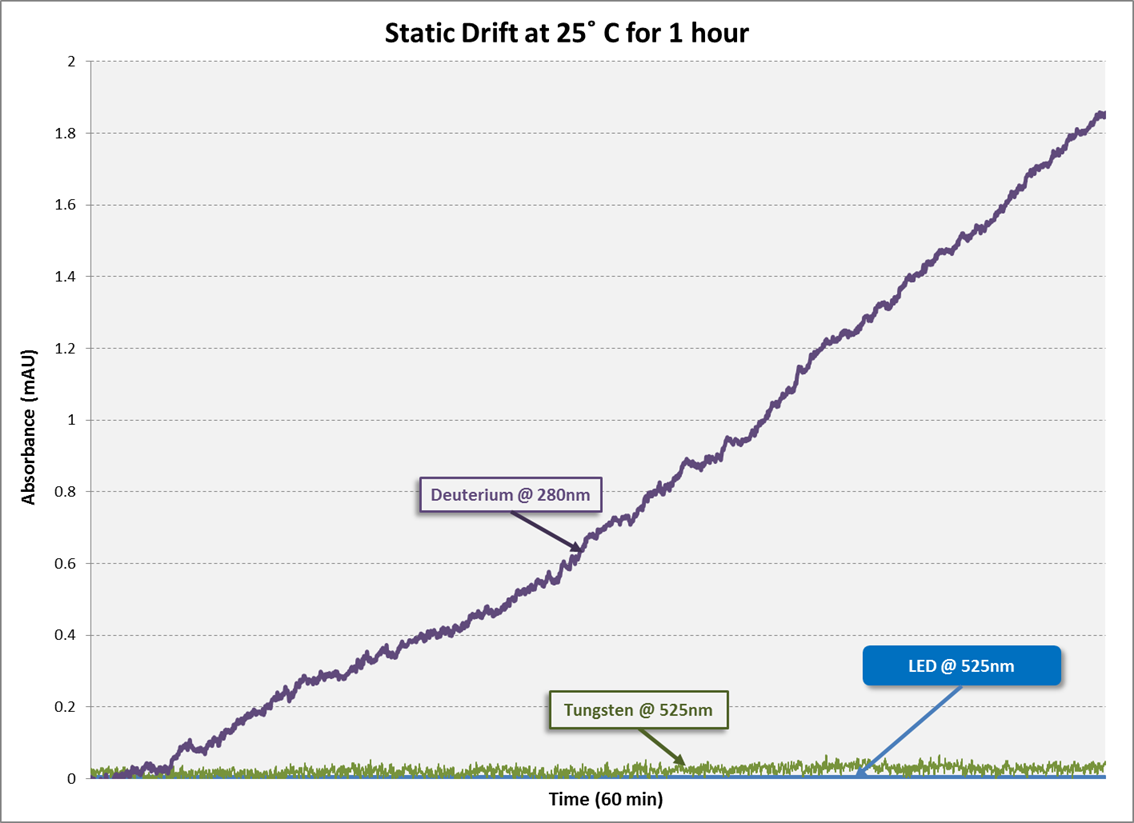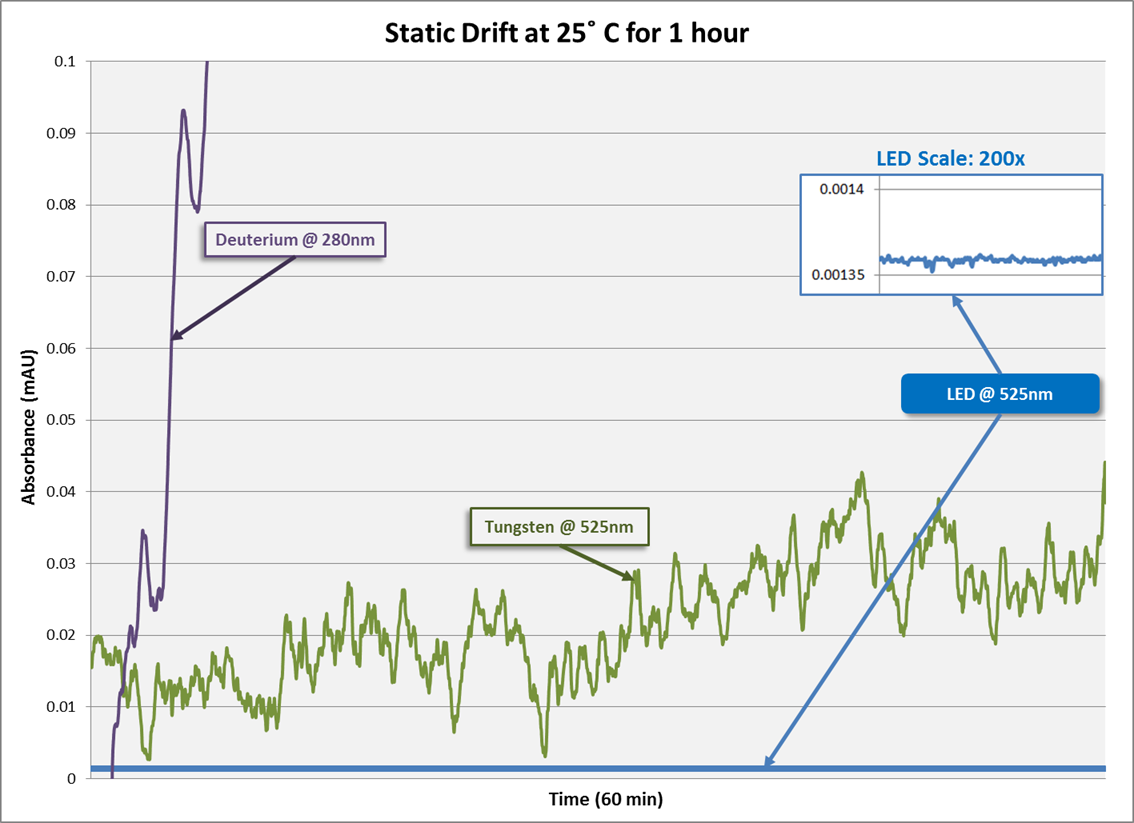Phoseon’s patented technology offers improved UV stability with solid-state light engines. Whether you are using an optical detector to analyze protein concentrations or sequencing RNA for drug discovery, repeatable processes are of high importance in life sciences research. Solid-state light engines are inherently stable and repeatable for years of service. Traditional arc lamps are inherently unstable, require repeated calibration and bulb replacement. These lamps are poorly suited to any process that requires consistent light day after day,
Due to Phoseon’s patented and proprietary design, the output of each array is calibrated and controlled to provide consistent and stable output. This happens in three phases: first the input current is carefully monitored and adjusted over time so as the diodes maintain a consistent output. Second, upon initial startup controlling the current to each array ensures the no overshoot of the nominal operating output. Last, the units are consistent over a wide ambient operating temperature range so the same energy is produced in various environmental conditions.
LED, Deuterium and Tungsten Comparison

i Static drift over 1 hour in HPLC water comparing LED, deuterium, and tungsten lamp stability.
Tungsten Lamp vs. LED Drift

ii Focus on lower absorbance values to highlight Tungsten lamp vs LED drift.